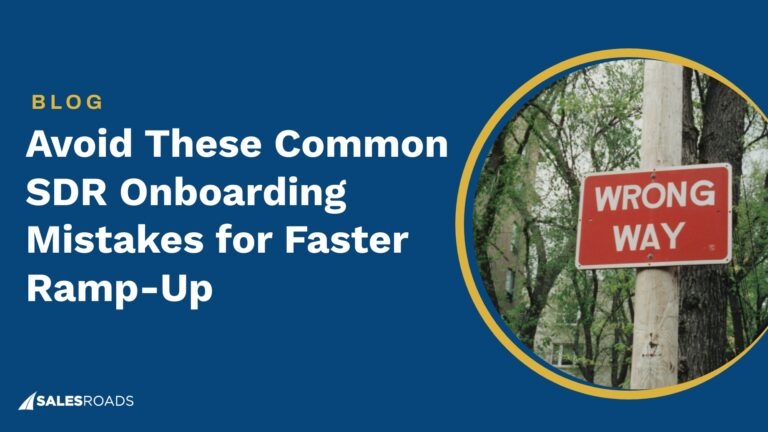Cold email vs. cold call—it’s a decision many businesses feel they need to make. Which one will bring the best results? Which method is most effective for driving leads?
As companies try to measure the effectiveness of each approach, they often find themselves torn between the convenience of cold emailing and the directness of cold calling. It’s easy to think there’s a “best” choice, but the reality is far more nuanced.
What Is Cold Calling? Advantages, Statistics, and Best Practices
Cold calling is a sales strategy where sales representatives contact potential customers who have had no prior engagement with the company or its products. This outreach method aims to generate interest, qualify leads, and ultimately close sales.
Cold calling can be a challenging yet effective way to reach new markets and connect with decision-makers directly.
Advantages of Cold Calling
Cold calling offers several distinct advantages that can enhance your sales strategy. First and foremost, it allows for real-time interaction, enabling sales representatives to gauge the prospect’s interest and objections immediately. This immediate feedback can help tailor the conversation and address any concerns, ultimately leading to higher conversion rates.
Additionally, cold calling provides the opportunity to build rapport and establish a personal connection with potential customers. Unlike cold emailing, which can feel impersonal, a phone call allows for a more engaging dialogue. Personal interactions can foster trust and credibility, making prospects more likely to consider your offering.
Cold calling can yield immediate results. While other methods, such as email outreach, may require days or weeks for responses, a well-timed phone call can lead to an instant conversation and potential lead qualification.
Moreover, cold calling enables sales reps to tap into new markets or demographics that may not be as reachable through digital channels. With proper research and preparation, reps can identify high-value prospects and engage them directly, which can lead to significant business opportunities.
Statistics on Cold Calling Effectiveness
- 57% of C-level and VP buyers prefer phone calls, showing that cold calling is still a valuable tool when used strategically.
- The average success rate for cold calls is about 4.82%, indicating the percentage of calls that lead to booked meetings
David Kreiger, founder of SalesRoads, says the phone is the least crowded channel in lead generation, so sticking to email alone won’t get your business very far:
Best Practices for Cold Calling
To maximize the effectiveness of your cold calling efforts, consider implementing these best practices:
Do Your Homework
The biggest challenge for 43% of salespeople in cold calling is acquiring higher-quality data.
And so before making a call, thorough research on your prospect is essential. Understanding their industry, specific pain points, and potential needs enables you to tailor your pitch effectively.
By demonstrating genuine interest in the prospect’s business, you set a positive tone for the conversation and increase the likelihood of engagement.
Prepare a Script
While spontaneity is valuable, having a basic script can help you stay focused during the conversation. A well-prepared script outlines key points, questions, and possible objections you may encounter.
Establish Rapport Quickly
Starting the conversation on a friendly note is crucial for setting the right tone. Use the prospect’s name and, when possible, reference something specific about their business or recent achievements.
Building rapport creates a comfortable atmosphere, allowing the prospect to be more receptive to your message.
Listen Actively
Effective communication involves listening as much as it does speaking. Paying close attention to the prospect’s responses allows you to adapt your approach based on their feedback.
Follow Up
If a prospect expresses interest but doesn’t commit immediately, ensure you follow up. A polite follow-up call can reinforce your conversation and keep the dialogue open.
A study on sales follow-ups shows a surprising stat:
44% of salespeople give up after just one attempt. In contrast, it typically takes about four “no’s” before a potential customer finally says “yes.”
By staying engaged and persistent, you show the prospect that you care about their needs and are willing to work towards a solution.
What Is Cold Emailing? Advantages, Statistics, and Best Practices
Cold emailing is the practice of sending unsolicited emails to potential customers or clients who have not previously expressed interest in your products or services. It’s a common marketing tactic used by businesses to generate leads and increase sales.
While it may seem like a daunting task, cold emailing can be a highly effective way to reach out to a large number of potential customers at once. When done correctly, it can help you build relationships, generate leads, and ultimately drive sales.
David Kreiger, President of SalesRoads, chats with Michael Maximoff about crafting effective cold email playbooks.
Advantages of Cold Emailing
First, cold emailing allows for scalable outreach. Sales reps can send emails to a large group of prospects at once, which saves time and resources. This efficiency makes cold emailing ideal for generating leads and filling the sales pipeline.
Another advantage is the ability to craft personalized, thoughtful messages. With the right tools, sales reps can gather data on their prospects and tailor emails based on the recipient’s role, industry, or pain points. Personalization increases the likelihood of a response and builds rapport with potential customers.
Cold emails are also more trackable. Metrics such as open rates, click-through rates, and response rates provide valuable insights into the effectiveness of outreach efforts. This data helps sales teams optimize their messaging and refine their approach.
Statistics on Cold Email Effectiveness
Cold emailing continues to prove its value as an effective B2B sales strategy:
- On average, cold emails see open rates between 17% and 28% across industries, which means that a well-crafted cold email has a solid chance of being seen by the recipient.
- While response rates may vary, they typically range from 1% to 5%, depending on the industry and approach. Though this might seem low, it can lead to significant opportunities when applied to a large volume of outreach.
Best Practices for Cold Emailing
To maximize the effectiveness of your cold email campaigns, follow these best practices:
Personalize Your Emails
Cold emails are most effective when tailored to the recipient. Use their name, reference specific details about their company or role, and highlight how your solution addresses their unique challenges. Studies show that personalized emails receive 29% higher open rates and a 41% increase in click-through rates.
Personalized subject lines, content, or even images make your emails stand out, signaling to the recipient that you’ve done your research and care about their business.
Keep Your Emails Concise
Long emails are often ignored, especially by busy decision-makers. Aim for clarity and brevity—get straight to the point and focus on the key value you offer.
A simple, short message with clear benefits will make it easier for recipients to engage with your email. Ensure your call to action is actionable and easy to find.
Use a Strong Subject Line
The subject line is the first (and sometimes only) thing recipients see before deciding whether to open your email. Make it compelling, clear, and relevant to their business.
Subject lines that create a sense of urgency, ask a question, or convey value can significantly improve open rates. Avoid generic phrases and focus on what will grab attention, such as referencing a challenge or trend in the recipient’s industry.
Provide Value
Every cold email should offer something of value to the recipient, whether it’s a helpful resource, insight, or even a solution to a problem they may not have realized they had.
Showcasing your expertise or offering something that addresses their pain points increases the chances of getting a response. For example, sharing relevant case studies, offering an exclusive demo, or giving a discount can incentivize engagement.
Follow up
Persistence is key in cold emailing. If you don’t receive a response to your first email, don’t give up. Sending follow-up emails can increase your chances of getting a response by as much as 40%.
Each follow-up should be polite but direct, reiterating the value of your offer and gently reminding them of the initial outreach. A good cadence is to space follow-ups over several days, adjusting the message slightly to keep it fresh.
Disadvantages of Each Approach
When comparing cold calling vs. cold emailing, both methods present unique challenges. Cold emailing can be seen as impersonal and easy to ignore, while cold calling can feel intrusive to prospects.
Each method requires a careful strategy to overcome its limitations, especially when building relationships with new contacts.
Cold Emailing
Cold emailing offers a more scalable and efficient way to reach a large number of prospects with minimal effort. However, one of the primary drawbacks is that emails can easily get lost in crowded inboxes or caught by spam filters, diminishing their effectiveness.
For businesses wondering, “Is cold emailing effective?” the answer depends on the quality of the content, personalization, and timing.
Prospects may view cold emails as impersonal, especially if they detect a lack of relevance or effort in tailoring the message to their needs. Without the opportunity for immediate interaction, it can take several follow-ups to engage a prospect. Furthermore, email open and response rates can be unpredictable, often leading to longer sales cycles.
That said, cold emailing does allow for detailed tracking and analytics, enabling sales teams to optimize their approaches based on data. To boost the chances of success, including clear subject lines, personalization, and a compelling call to action is essential.
Cold emailing can be highly effective when integrated with other outreach methods, such as cold calling, but on its own, it requires strategic execution.
Cold Calling
Cold calling may seem more direct than cold emailing, but it comes with its own set of disadvantages.
One major drawback is that it often catches prospects off guard, leading to abrupt hang-ups or rejection. In a world where many people prefer digital communication, a cold call can feel intrusive.
Still, for those comparing a cold email vs. cold call, cold calls offer the advantage of real-time conversations, allowing for immediate engagement and response.
Another downside is the time investment. Unlike emails, cold calls require more time and effort from sales reps, with each interaction being one-on-one. This can make scaling outreach more difficult.
Additionally, it can be challenging to reach decision-makers directly, as they may be protected by gatekeepers or have busy schedules. This leads to wasted time spent navigating voicemail systems or speaking with non-decision-makers.
However, cold calling can be effective when done right. A well-prepared sales script, strong value proposition, and polite persistence can open the door to a productive conversation. It also provides immediate feedback on the prospect’s interest, helping sales teams prioritize leads and adjust their messaging based on real-time reactions.
How to Choose the Right Approach for Your Business?
When deciding between cold calling vs. cold emailing, it’s important to evaluate which method aligns best with your business goals. Each approach has its strengths and weaknesses, and the key to success is understanding which will work best for your business.
Below, we’ll break down several considerations that can help you determine whether to prioritize cold email vs. cold call for your outreach efforts.
Understand Your Target Audience
One of the first steps in choosing between cold calling vs. cold emailing is to assess your target audience’s preferences.
For instance, if you’re targeting executives or decision-makers with packed schedules, a cold email may be less intrusive and allow them to respond on their own time.
On the other hand, if your prospects prefer direct interaction, you need immediate feedback, or if your target industry is saturated with cold emails, cold calling is more effective.
Consider how your audience typically engages with communication—if they are more digital-savvy, emails might be the best way to get your foot in the door. By understanding your target audience’s communication preferences, you can choose the outreach method that maximizes engagement and results.
Consider Your Sales Cycle Length
The length of your sales cycle is another critical factor when determining whether to use cold emailing or cold calling.
For businesses with longer sales cycles, cold emailing can serve as a valuable tool for nurturing leads over time, while cold calling might be more suitable for shorter, transactional cycles where quick decisions are made. Cold emails allow for a series of touchpoints that can build trust gradually.
On the flip side, cold calls give you the chance to quickly address objections and qualify leads in real time. Consider the typical decision-making process of your buyers to determine which method aligns best with the pace of your sales cycle.
Analyze the Personalization Needs
Personalization is a critical component in both cold emailing vs. cold calling, but the way you approach it can vary. Cold emails can be personalized at scale using data, enabling you to craft tailored messages that resonate with each prospect’s unique pain points. However, if done poorly, cold emails can come across as generic or automated.
Cold calls, on the other hand, offer a more immediate opportunity for real-time personalization. You can adjust your message based on the prospect’s reactions and quickly pivot the conversation based on their specific needs.
If deep personalization is key to your sales success, cold calling could be the better choice, while cold emailing can serve as a scalable way to open the door.
Bottom Line
For many businesses, the most effective strategy isn’t choosing cold email vs. cold call, but rather combining both methods.
Cold emailing can serve as the initial point of contact, allowing you to warm up leads before engaging them further with a call. This strategy helps build familiarity with your brand, increasing the chances that your cold call will be better received.
In contrast, a successful cold call can also be followed up with a cold email to keep the conversation going. By integrating both approaches, you can create a cohesive outreach strategy that maximizes touchpoints and enhances the likelihood of converting leads into customers.











